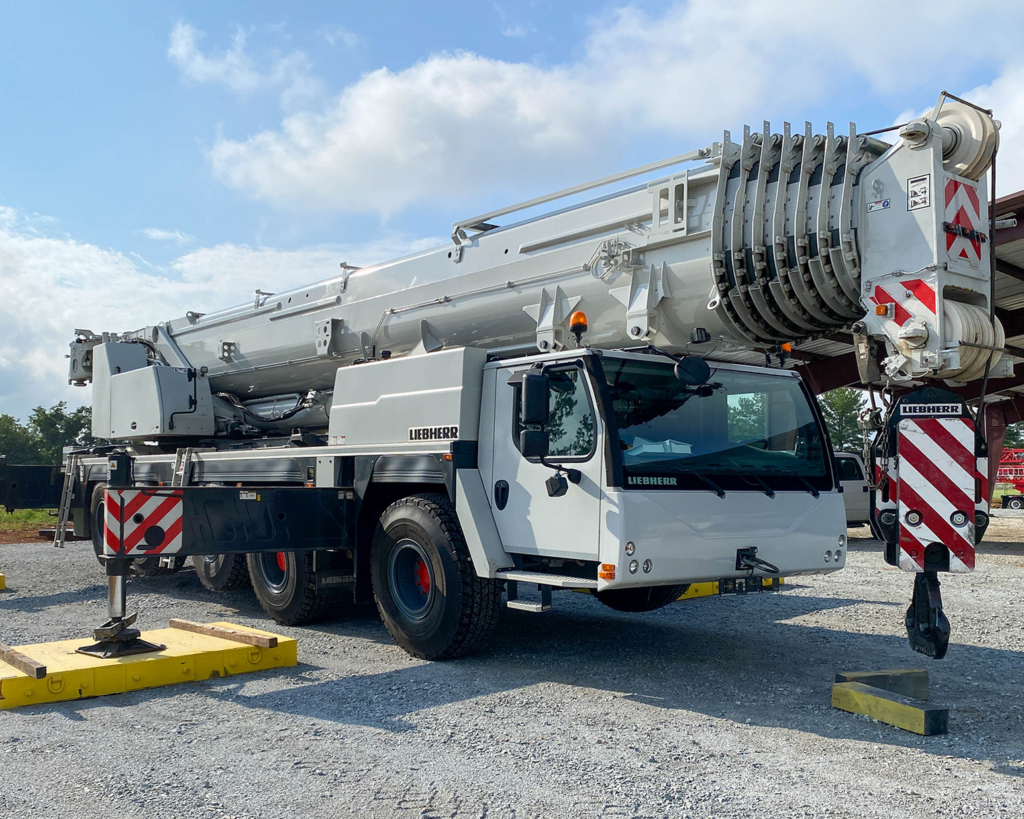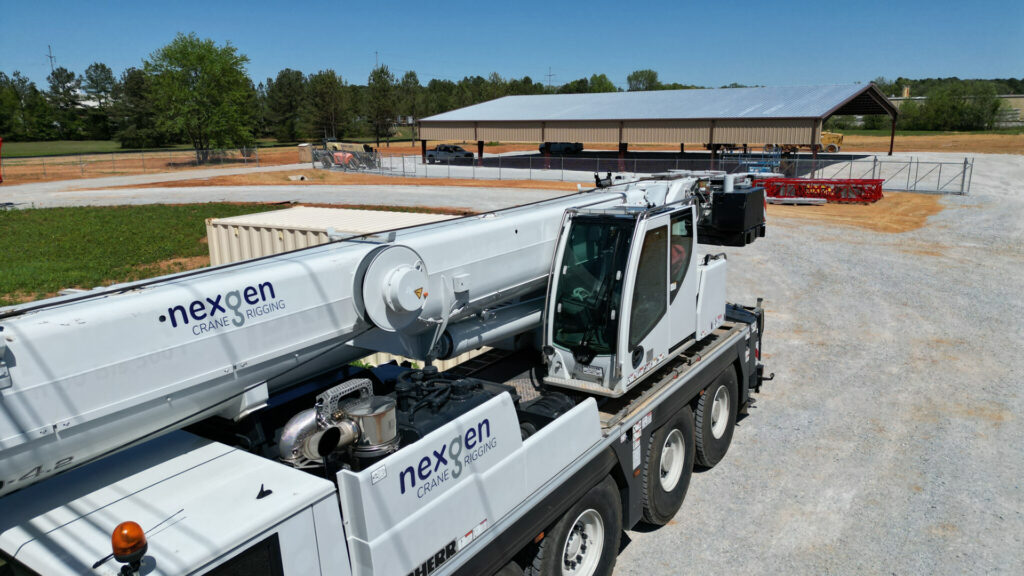When it comes to heavy lifting in construction projects, cranes play a pivotal role in ensuring smooth operations.
Today, we’ll dive deep into the world of cranes, particularly comparing two popular contenders: All-Terrain and Rough Terrain Cranes. Buckle up as we explore their unique features, the types of jobs they excel in, and the advantages and disadvantages of each. By the end, you’ll have a clear picture of which crane suits your construction needs best.
Introducing All-Terrain and Rough Terrain Cranes
All-terrain and rough terrain cranes are both mobile machines designed to perform various lifting tasks at construction sites. However, they differ in their capabilities and the challenges they can handle.
All-Terrain Cranes are multi-purpose, usually equipped with both on-road and off-road capabilities. They consist of a telescopic boom mounted on a sturdy truck chassis, allowing them to maneuver in varying terrains, travel at high speeds on main roads, and lift exceptionally heavy loads.
Rough Terrain Cranes, on the other hand, are specifically designed to operate in off-road or rough terrain conditions. As such, they require specialized wheels and tires to provide the necessary stability and traction, making them more flexible and maneuverable than all-terrain cranes. They can easily traverse rough and uneven landscapes with their rugged 4×4 chassis and excellent ground clearance. This makes them ideal for use in rough conditions like muddy or sandy terrain but unsuitable for paved roads or public highways.

All-terrain and rough terrain cranes differ in their capabilities and the challenges they can handle.
Jobs Best Suited for All-Terrain Cranes
All-terrain cranes are known for their efficient mobility and versatility, and they are often used in various construction, infrastructure, and industrial projects. They are particularly useful for:
- Long-range construction projects involving various locations. For example, a bridge construction project that extends over several miles.
- Jobs that require frequent relocation of the crane to different job sites, such as constructing skyscrapers in multiple cities.
- Working in congested spaces where maneuverability is key, such as lifting heavy loads on top of tall buildings in city centers.
- Large-scale projects requiring maximum lifting capacity and reach, including larger structures such as bridges, skyscrapers, and stadiums.
- Projects demanding flexible operation and fast mobility, such as bridge erections and wind turbine installations.
Jobs Best Suited for Rough Terrain Cranes
Rough terrain cranes are best suited for jobs that require off-road maneuverability in challenging conditions or job sites with limited space, such as:
- Working on uneven surfaces like mud, gravel, and rough terrain.
- Lifting heavy loads in areas where access is difficult or impossible for a conventional crane, like moving large machinery on steep hillsides.
- Smaller tasks like lifting concrete blocks, tree logs, and prefabricated structures.
- Transporting materials through narrow paths and working in tight spaces.
- Operating in remote locations with limited power sources, such as mountains and deserts.
- Working in conditions with limited visibility, such as in tight spaces or at night.
All-Terrain vs. Rough Terrain Cranes
No machine is perfect, and all-terrain and rough terrain cranes have their strengths and weaknesses. That said, all-terrain cranes offer a few key advantages over rough terrain cranes, such as:
- They are more powerful than rough terrain cranes, allowing them to lift heavier loads, particularly without needing to reposition the crane.
- They have a longer reach, enabling them to lift loads higher.
- They have a smoother, faster ride on paved roads and highways, making them ideal for long trips.

All-terrain cranes offer a few key advantages over rough terrain cranes.
However, all-terrain cranes also come with some drawbacks:
- They are typically more expensive to purchase than rough terrain cranes.
- The additional features, functionalities, and heavier load capacity of all-terrain cranes might require a more experienced operator to fully utilize their capabilities effectively.
- Their longer reach makes them more difficult to maneuver around tight corners.
Rough terrain cranes offer several advantages as well:
- They are smaller and lighter than all-terrain cranes, making them easier to transport.
- With features optimized for stability and performance on challenging surfaces, some operators may find rough terrain cranes easier to handle.
- Their rugged design allows them to easily traverse rough terrain like gravel, mud, and uneven ground.
- They are generally cheaper to purchase than all-terrain cranes.
However, they also have some disadvantages:
- Their smaller size and shorter reach make them less powerful than all-terrain cranes, limiting their lifting capacity.
- They can be challenging to maneuver around tight corners due to their shorter reach.
- They don’t offer a smooth ride on paved roads and highways.
Advantages of Choosing an All-Terrain or Rough Terrain Crane
When selecting between an all-terrain and a rough terrain crane, your decision should depend on your specific project requirements. Here are some key considerations to keep in mind:
Maximized efficiency and productivity: Both cranes offer unique features catering to specific construction needs, helping you accomplish tasks faster and more easily.
Reduced transportation costs: All-terrain cranes’ on-road capabilities eliminate the need for additional trucks for transportation, while rough terrain cranes are compact enough for simple transport.
Increased safety: With greater stability, all-terrain, and rough terrain cranes reduce the risk of accidents during lifting operations.
Durable and reliable: Both cranes are designed to withstand rough conditions and operate in various environments.
Choosing the right crane for your project is essential to ensure safety, efficiency, and cost-effectiveness. So, whether you opt for an all-terrain or rough terrain crane, consider the nature of the job and the demands of the worksite — after all, it’s about finding the perfect fit!
Make the Right Crane Choice at NexGen Crane & Rigging
No matter which crane you choose, having a qualified and experienced operator is crucial for optimal outcomes. At NexGen Crane & Rigging, our operators have years of experience with all-terrain and rough terrain cranes for large construction jobs. You can trust us to complete your project safely, efficiently, and up to industry standards. Our experts can assist you in selecting the right crane – All-Terrain or Rough Terrain – so contact us today!

